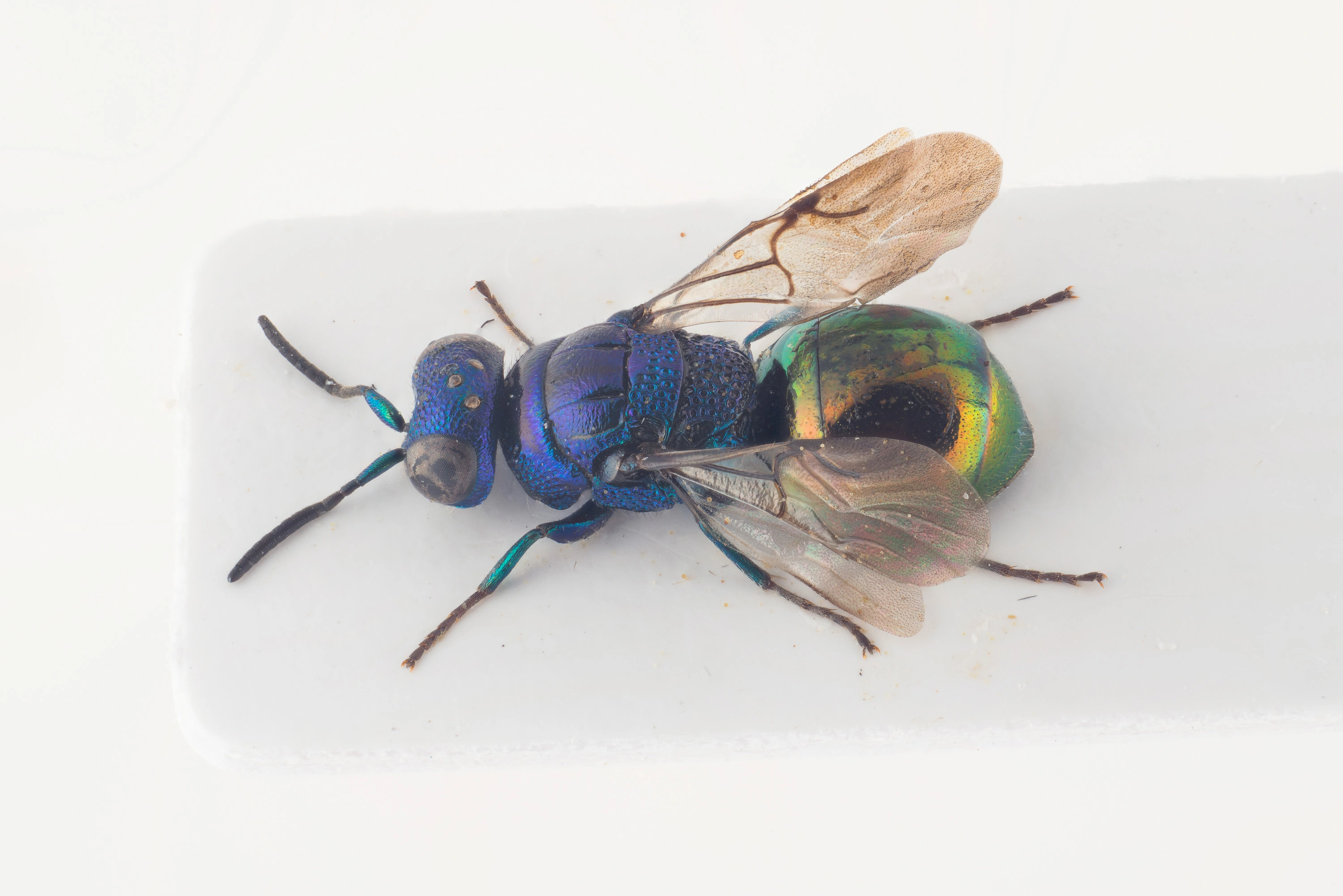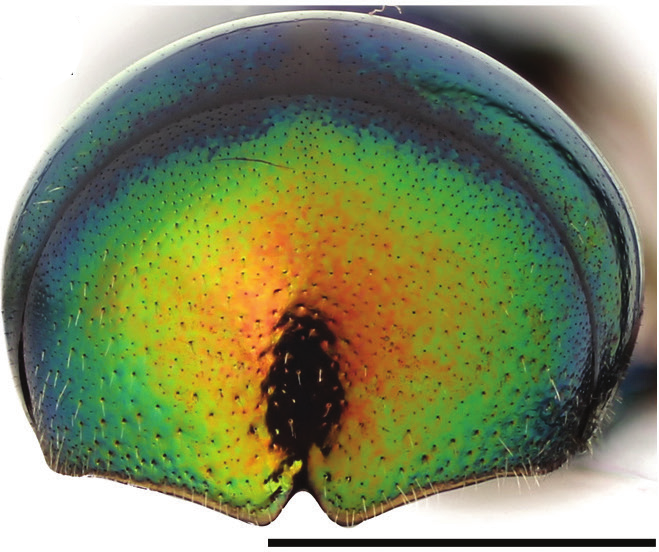Omalus biaccinctus
A relatively rare species that may be found in shrubs and warm slopes with large amounts of dead wood. The hosts are small Crabronidae of the genus Passaloecus. Omalus biaccinctus is rather easy to separate from closey related species by the wrikled mesoscutum.
- Innhold
- Diagnosis
- Distribution
- Biology
Diagnosis
Figure 20
Mesosoma, lateral view (arrow indicating mesopleuron): Omalus biaccinctus ♀. Scale 1 mm.
Figure 21
T3, posterodorsal view: O. biaccinctus ♀. Scale 1 mm.
Length 3–5 mm.
Both sexes differ from O. aeneus and O. puncticollis by having a bicoloured body (head and mesosoma violet or black, mesosoma reddish or greenish) and a dull and wrinkled mesoscutum without punctures (Fig. 20). The apical notch of T3 is also more deeply triangular (Fig. 21) than in the other two species. The colour of the mesosoma is violet in the female, but dorsally black or dark violet in the male. The metasoma is greenish, golden or reddish in the female, whereas it is greenish, rarely golden or reddish, and dorsally usually black in the male.
Distribution
Denmark, Estonia, Finland, Latvia, Norway, Sweden. Relatively rare.
West Palearctic: from western Europe to western Asia (Linsenmaier 1959).
Be aware that the records present in the GBIF map may be misleading for some countries due to unrevised data sets or missing information.
GBIF Taxon: Omalus biaccinctus (Buysson, 1893)Biology
Habitat: pine forest margins and clearings, semi-open sandy areas. Occasionally found on flowers of Apiaceae and Asteraceae (Kofler 1975, Rosa 2004).
Flight period: June to August.
Host: Passaloecus turionum Dahlbom, P. gracilis (Curtis) and P. eremita Kohl (Crabronidae) (Lomholdt 1975, Tormos et al. 1996, Wickl 2001, our own obs.). Adults have been reared from old resin-galls of Retinea resinella (Linnaeus) (Tortricidae) (V. Vikberg, pers. obs.) and pieces of pine wood (Kofler 1975) with host nests inside. The females oviposit in living aphids at the hunting site of their host, and the egg is brought into the host’s nest concealed in the aphid prey (Winterhagen 2015). Thus, the females do not enter the nest of their host for oviposition.


